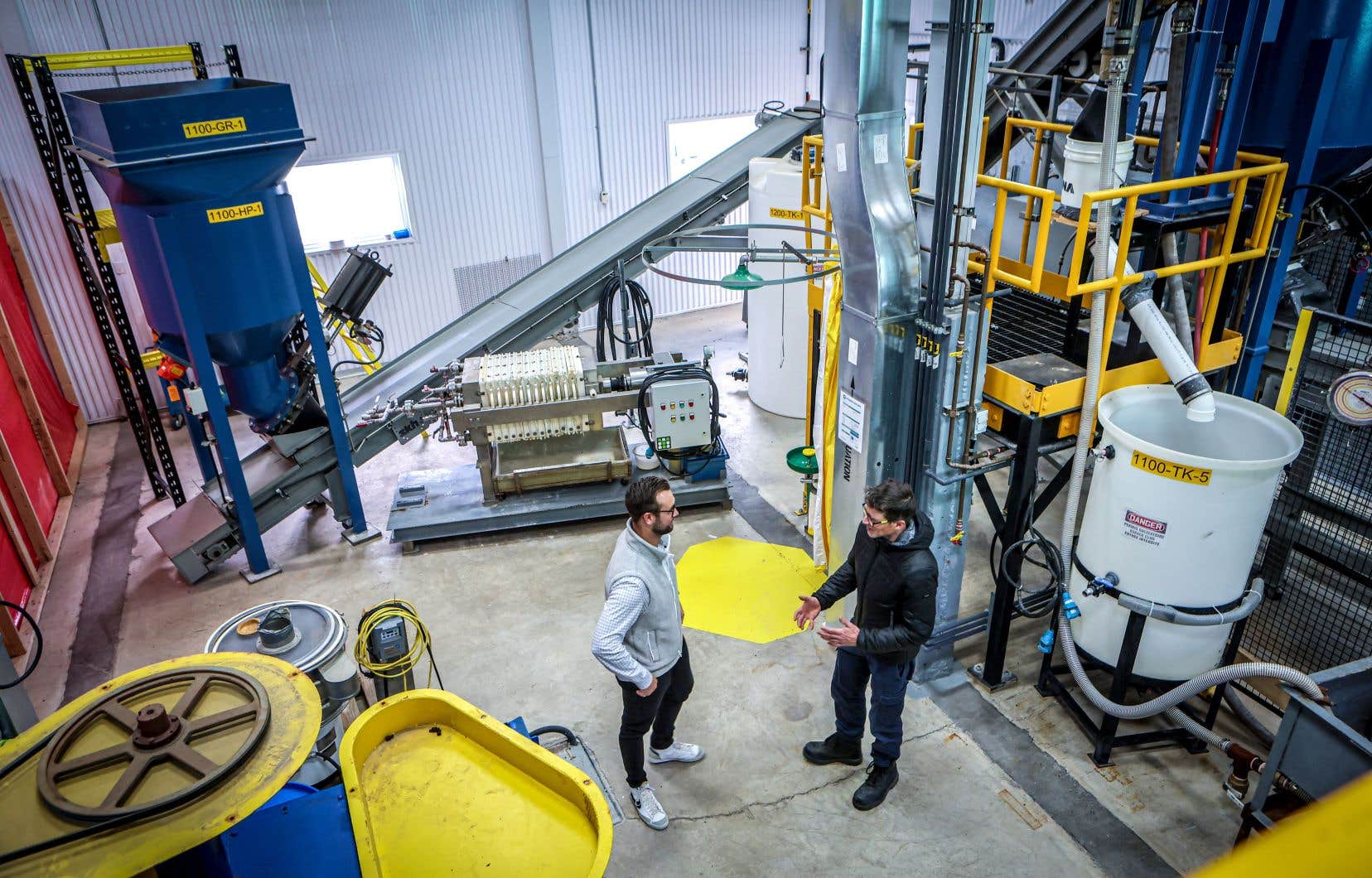We have been talking about it for two decades with increasing skepticism. For the moment, reducing global CO emissions2 by burial has still not moved from theory to practice. The young Montreal startup Exterra claims to have achieved this in Val-des-Sources, the municipality formerly called Asbestos.
Founded by Olivier Dufresne in 2021, Exterra has obtained $4.1 million to date to develop a process that combines carbon dioxide with certain mining residues to generate an inert and harmless rock in just four hours. environment, which can be reinjected into old mines. Once the site is filled, the land can be quickly forested or reclaimed, the company says.
Its objective is to bury up to 100 tonnes of carbon in the subsoil of Val-des-Sources by the end of 2024, to demonstrate the feasibility of its project. The company subsequently hopes to complete a new financing stage, early in 2024, to increase its landfill capacity to 1,000 tonnes per year before the end of 2025. Exterra intends to obtain its supplies from the start-up Montreal-based Deep Sky, founded by Frédéric Lalonde, the boss of Hopper, a Montreal technology company in the travel sector.
Deep Sky plans to develop technology capable of capturing CO2 directly into the air or oceans, which is just as ambitious as what Exterra is trying to accomplish.
For his part, Olivier Dufresne calculates that Exterra will need an additional $15 million to accomplish this expansion. But that’s not all. The Val-des-Sources plant could bury up to 500,000 tonnes of CO2 per year, a model which, the Montreal entrepreneur hopes, can be reproduced elsewhere in the world. According to him, 2 billion tonnes of CO2 could be buried each year simply from the new residues produced annually by the mining industry.
In Quebec alone, 800 million tonnes of mining residues containing an adequate concentration of calcium or magnesium are just waiting to be transformed. Calcium and magnesium are the miracle ingredients in the recipe developed by Exterra to produce this completely inert residue.
Calcium carbonate is the main element that makes up chalk. Magnesium carbonate is harmless enough to be used as an additive in the food industry. Consumed in too large quantities, however, it can cause heartburn.
As there is no shortage of abandoned mining sites, the potential is great for Exterra’s technology, believes the Montreal company.
Commercial viability?
Exterra presents itself as the world’s first carbon landfill solution, soon to be commercially viable. To date, all the solutions considered, whether in the mining or oil sectors or elsewhere, have come up against the impossibility of ensuring such expansion.
“I think we have the best possible chance of creating a technology that will be functional on a large scale,” Olivier Dufresne underlines in an interview. Its landfill formula costs a little less than $100 per ton, more than the $30 per ton of CO2 what does the underground injection cost that the Western Canadian oil industry would like to see happen.
Except that burying rocks as Exterra does is not as risky as injecting gas under high pressure. Olivier Dufresne sees other benefits from his technology. “We can reduce the carbon tax of emitting companies, or they can obtain high-quality carbon credits which they can then resell. For our part, the co-product of the transformation of CO2 rock is a carbon-neutral mineral that can be resold to battery manufacturers or in the construction industry. »
If he adds the income from these co-products to his calculation, the cost of burying the carbon is practically zero, assures Olivier Dufresne. “The companies we work with will receive a [redevance] per ton of rock buried. We are still demonstrating the feasibility of the project, but according to our estimates, it will ultimately be very profitable to do this. We can then distribute the profits to the participating cities. »
“In Val-des-Sources, we want to give [redevance] to the municipality. We maximize the contribution of local businesses, we want to have a positive local impact. »
Ultimately, Exterra hopes to be able to move its activities directly to where they are needed. For example, a mobile unit could treat large CO emissions on site2 cement plants or aluminum plants.
Because the challenge of decarbonization goes further than eliminating fossil fuels from the transport sector. Sequester CO2 should not be an excuse to continue pumping oil, says Olivier Dufresne.
“The IPCC [Groupe d’experts intergouvernemental sur l’évolution du climat] is categorical: we must reduce our emissions and, in addition, remove CO2 of the atmosphere. We are dealing with industries that are difficult to decarbonize — cement plants do not currently have a solution to stop their emissions. These industries will need solutions to recover their CO2 and reduce their environmental footprint. »
At the rate things are going, this solution will have seen the light of day in Val-des-Sources.
